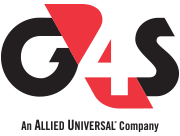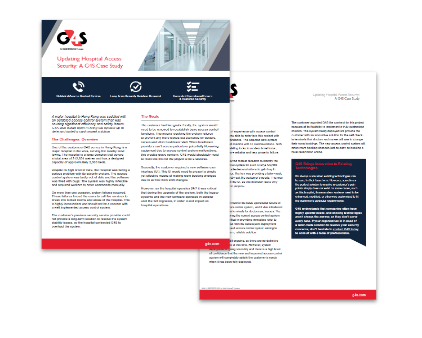Updating Hospital Access Security

THE CHALLENGES: OVERVIEW
One of the customers G4S serves in Hong Kong is a major hospital in the area, serving the nearby local towns. The hospital is a large complex that covers a total area of 212,634 metres and has a designed capacity of approximately 2,000 beds.
Despite its high level of care, the hospital was facing a serious problem with its security system. The access control system was badly out of date and the software was filled with bugs. The system was highly inflexible and required workers to enter commands manually. On more than one occasion, system failures occurred. These failures forced the users to call fire services to break into locked rooms and areas of the hospital. This is highly inconvenient and should not be a concern with a well-implemented access control system.
The customer’s previous security service provider could not provide a long-term solution to resolve the system stability issues, so the hospital contracted G4S to overhaul the system.
THE GOALS
The customer had two goals. Firstly, the system would need to be renewed to re-establish basic access control functions. This means resolving the system failures to prevent any more locked-out scenarios for doctors, nurses and other healthcare staff. When healthcare providers can’t access patients or potentially life-saving equipment due to access control system malfunctions, this creates grave concern. G4S would absolutely need to meet this first for the project to be a success.
Secondly, the customer required a new software user interface (UI). This UI would need to present a simple yet effective means of making room booking changes due to ad hoc work shift changes. However, as the hospital operates 24/7 it was critical that during the upgrade of the system, both the legacy systems and the new software operated in parallel until the full migration, in order to not impact on hospital operations.
THE SOLUTION
G4S has plenty of experience with access control systems, so it was able to enter into this project with purpose and confidence. The selected new system was an IP-based solution with UI customisations. G4S upgraded the existing locks to modern hotel locks, which are far more reliable and less prone to failure.
The solution involved market research to identify the best access control system for such a large hospital complex and on-site demonstrations to gain buy-in from the customer. The key was providing a tailor-made solution to perfectly suit the customer’s needs. This was especially true of the UI, as this interface had a very specific and niche purpose.
THE RESULTS
G4S was able to resolve the basic operational issues of the existing access control system, and it also introduced new self-check-in terminals for doctors and nurses. The solution for restoring the current access control system operation was critical in providing immediate relief to hospital personnel, with the subsequent deployment of the new IP-based access control system aiming to provide a long-term, reliable solution.
This project is still ongoing, so there are no definitive results to provide at this time. However, system deployment is going smoothly and there is a high level of confidence that the new and improved access control system will completely satisfy the customer’s needs when it has been fully deployed.
The customer awarded G4S the contract for this project because of its flexibility to implement a truly customised solution. The system being deployed will provide the customer with an innovative solution for the self-check-in terminals that doctors and nurses will use to change their room bookings. The new access control system will make room booking changes just as easy as booking a
hotel reservation online.
DOWNLOAD THE PDF CASE STUDY
If you would like this case study in PDF, please complete the form to gain access.

